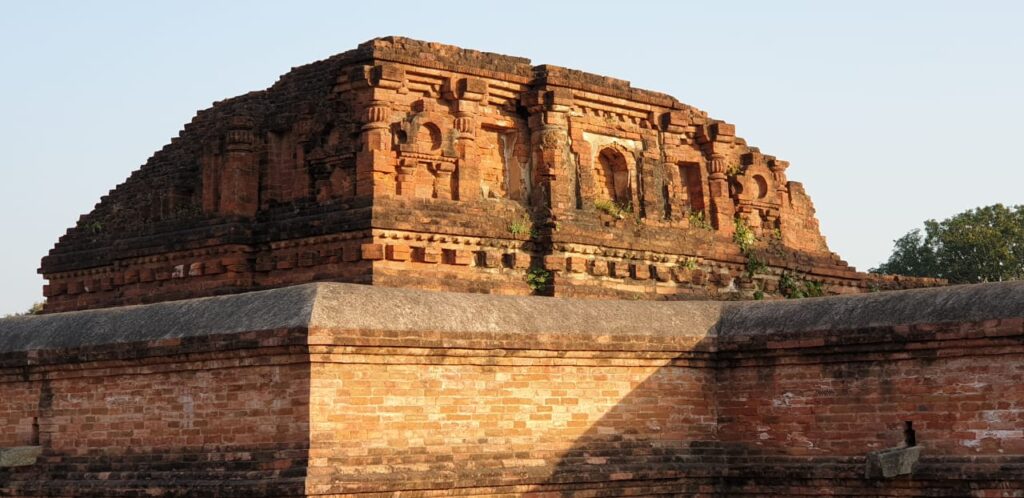Tourism has unfolded in all its multi-splendoured glory at an astonishing pace in the last few decades. By all accounts this growth rate also signifies the pride of place India occupies on the Heritage Tourism map given its vast expanse of sites that deserve a pre-eminent status.
Tourism has always been triggered by man’s desire to understand diverse cultural identities that accrue to become a melting pot and a unifying force. Not just in India, Heritage Tourism thrives the world over for its singularly compelling aspect to promote peace and harmony. This cultural exchange has resulted into the mankind realising the necessity to protect its prized historical monuments and rich legacy. After all, no legacy is as rich as the Heritage.
The exponential rise in the number of people seeking to explore this cultural amalgamation has brought into sharp focus the twin and complementary elements of motivational travel and the obligation to preserve Heritage. While the country has witnessed an unprecedented surge in Heritage Tourism even as it strives to protect its cherished sites, the economy has been the winner.
Heritage Tourism is a magnificent manifestation of the country’s diverse art forms and the people who practice them. In this diversity is implicit the human urge to learn and draw from other cultures and broadening one’s perspective. Despite a number of irritants in this maze of interactive forces, culture and heritage have formed a backbone of crucial resources for tourism development. The World Trade Organization has conceded that 37% of international tourism is culturally-driven and the heartening news is it is estimated to grow at 15% annually.
As one of the fastest-growing segments of the tourism industry, heritage tourism serves as an effective apparatus in generating jobs, income, tax revenues, diversify local economies, and improve the local quality of life. Although there might be this niggling argument that bringing revenue to historic sites, ruins and other such sites Heritage Tourism also runs the risk of degradation, there is no denying that with the implementation of laws and public awareness, it satisfies the core purpose of enhancing and safeguarding heritage and culture. Apart from shoring the country’s foreign exchange reserves, it also has the potential to rejuvenate traditional buildings and craft industries. This economic boost is also aggregated by strengthening local people’s self-respect, values and identity, thereby safeguarding aspects of their intangible heritage and enhancing their development potential.
With its copious legacy, India has always been known for its rich heritage and ancient culture. It is therefore not altogether surprising to see Heritage Tourism gallop on the country’s sublime past and cultural diversity, making a robust combination that attracts millions each year to its heritage tourist attractions.
Untapped potential
The Government of India, particularly the Ministry of Tourism and Culture has gone out of the way to boost Heritage Tourism by coming out with attractive sops in states that are universally acknowledged for attracting tourists. India’s rich heritage is amplified in the variety of its shrines, palaces, monuments, and forts that are scattered through its length and breadth.
There is a twist in this tale, however. For all the exemplary work that has gone into the making of Heritage Tourism a part of people’s consciousness, the country still has a considerable untapped potential. It is perplexing that despite the country’s bounteous heritage, diversity of cultures, exotic cuisines and long annals of civilization, it still has a comparatively smaller number of world tourists and tourism revenue.
It is not as if the government is not seized of this state of affairs. It did come up with a policy decision that enabled the funding of domestic travelers and to an extent showed its intent in promoting Heritage and Cultural Tourism. That, however, was not enough. A huge thrust will be required to convert this exercise into one that will yield the big dollars. What needs to be understood is that Heritage Tourism cannot be viewed in isolation. Other ancillary segments like transportation, infrastructure, hotels and hospitality also have a contributing role to play in hiking the revenue. A corresponding and simultaneous stimulus is called for at the same time. Put simply, the entire picture needs to be looked at holistically in the run up to the challenges posed in boosting tourism revenues.
The government’s pitch is queered by socio-economic imbalances and environmental mutilations – both wages of mass and uncontrolled/unregulated tourism. It is actually not about the growing number of tourists per se but the lack of character in responding to the growing threats to exceptionally treasured sites. On the flip side, unbridled tourism industrialization also acts as a detriment to fragile areas that call for urgent protection.
The situation cannot be underscored more by the fact that an overwhelming 60% of the global eco-systems, thousands of animal species and plants classified as endangered by human indiscretion are adversely affected because of human indiscretion and indiscipline. It becomes pivotally important to ensure that while Heritage Tourism multiplies in terms of the number of travelers, there are sensible tourism practices to deal with such drifts.
Striking the right balance
Harsh as it may sound, this calls for reducing the tourist footprint in an environment that has already suffered at the hands of thoughtless people. It should be no rocket science that this could have disastrous consequences for both Heritage Tourism and their protagonists. The challenge lies in striking a better balance between Heritage Tourism development and preservation of Heritage sites/structures.
One way of tackling at this disconcerting scenario would be territorial tourism management. Since the fact remains at the end of the day that the natural heritage as well as cultural heritage of a site is the prime attraction, tourism players should not only exercise caution and discretion, they should also be strict when it comes to regulation and compliance.
This should not only include museums and historical monuments but also “living heritage” or “intangible cultural heritage”. Promoting this heritage will automatically ensure the cultural diversity and promote inter-cultural dialogue. All stakeholders should rise to the occasion in bringing about this much-needed transformation.


 [/column]
[/column]